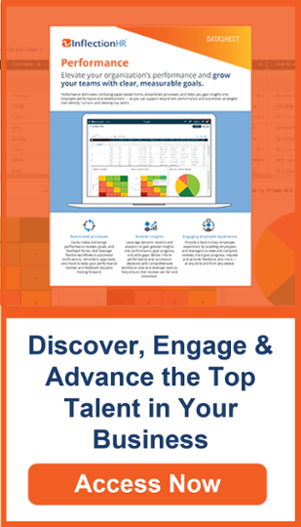Progressive discipline is a tiered, fixed system for employees whose conduct or performance does not meet company standards. Essentially, it creates greater incentives to, over time, correct work-related problems to avoid eventual termination.
How Does Progressive Discipline Work?
Typically, the discipline process has 4 key steps:
- Start with verbal warnings or coaching.
- If behavior or performance does not improve, the next step is usually a written or formal warning.
- Then, if performance has still not improved, a performance improvement plan (PIP) should be put into place that clearly lays out expectations and goals.
- Of course, sometimes problem employees can not fix themselves, and so termination may be the only course of action if the PIP is not fulfilled.
If you decide that progressive discipline is right for your business, setting clear expectations in the job description(s) going forward will give any employee whose performance is suffering the greatest opportunity to improve.
Progressive discipline does in fact work, although it is still considered a controversial method of fixing problem employees. By arming yourself with the pros and cons of this system, you can decide if this method is appropriate for your company.
Benefits of Progressive Discipline
The benefits of progressive discipline include:
- Accountability for all employees and a clearly defined pathway for improvement.
- Transparency through documentation and encouraging fair treatment in the discipline process.
- Assisting managers by providing a framework for conducting disciplinary action.
Performance Reviews
When speaking with employees about performance, always conduct meetings privately and formally. They should always include a third party, such as a human resources professional. A union representative may also be involved.
If progressive discipline is the right thing for your business, it is important that during a performance review that as an employer you clearly outline clearly what violations have occurred and where the employee can improve.
The employee should know:
- The level of escalating discipline.
- The next stage of discipline.
- What actions must occur to prevent further discipline.
Management should learn why their employees are struggling and offer assistance in appropriate ways.
Sometimes, employees are having difficulties in their personal lives that can impact their work. Managers should consider such circumstances when determining future discipline. Any future meetings should occur in the same manner - privately, with clear communication.
Cons of Progressive Discipline
While progressive discipline can be very helpful and beneficial, it may not be right for every business.
Some drawbacks of progressive discipline may include:
- It can seem detached or cold to a struggling employee.
- It may require managers to progress to the next disciplinary step when another route may yield better results.
- It can promote a false sense of a one-size-fits-all mentality.
Employees who feel subjected to arbitrary rules may not be particularly trusting of management or maintain high morale. When implemented incorrectly, progressive discipline can lead to leadership blaming or disciplining an employee when there is an opportunity for collaboration to fix the underlying issue.
Workplaces that require high amounts of autonomy and responsibility should ensure that managers are empowered to make the best choices for their employees. Truthfully, progressive discipline can always be the best method for fixing a problem employee, but it is important to not be so iron-clad with your steps and procedures, as some situations require special care, and sometimes it may be better to linger in a stage than immediately moving to the next.
In short, it depends on the employer and the employee to make sure that progressive discipline works through strong lines of communication and understanding.
Creating a Performance Improvement Plan (PIP)
Creating a solid PIP is the most crucial element of any progressive discipline structure.
Most progressive discipline models require formalized documents outlining the steps for improvement and are kept on-hand by HR as part of a permanent record. This is typically the final stage of progressive discipline before termination.
The thing to keep in mind in a PIP is to ensure that an employee understands that it is meant to help them grow within your company and that you are trying to help them improve. You aren't giving them a warning, or telling them to do this, or else you are fired.
Something to keep in mind is that when an employee receives a PIP, they may jump to the conclusion that they are on their way out the door, and so they may go search for a new job or even quit on the spot.
Creating clear, descriptive, and achievable goals that still challenge the employee is the best way to do this. You should also help provide a path to help them achieve their goals, don't just send them out into the cold on their own.
You should be prepared, however, in case your employee decides to find a new job, rather than complete your PIP.
Progressive Discipline PIP Alternatives
There may be other options instead of using a traditional PIP or other forms of progressive discipline while still holding employees accountable and to high standards.
Employers can:
- Reevaluate the employee's role or position.
- Reverse engineer the PIP. Meet with the struggling employee and agree upon a set of goals together that managers and employees revisit regularly.
- Install preventative measures. Managers should endeavor to work closely enough with employees that formal action isn't required.
- Address concerns as soon as they arise.
- Identify and brainstorm collaborative solutions.
- stay in close contact with employees regarding potential pitfalls.
Final Thoughts on Progressive Discipline
Human resource management tools, like those available through Inflection HR, can help solve problems before they happen. Inflection HR is your one-stop, end-to-end solution for talent management, including performance management technology and on-call support for your HR team.
To see how we are already helping countless businesses with their performance management, contact us today!

